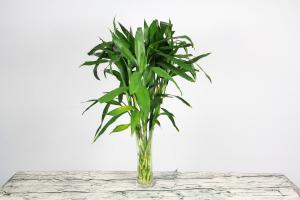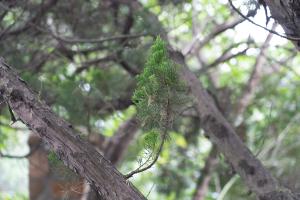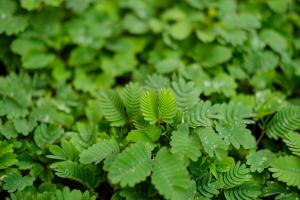A Fir Tree is in This Plant Group
When looking at a forest, one cannot ignore the towering height and needle-like leaves of the fir tree. Along with the spruce and pine, the fir tree belongs in the conifer family. Coniferous trees are known for their cone-shaped structures that house seeds and their needle-like leaves that are adapted to withstand harsh winter weather. The fir tree, in particular, is one of the most widely recognized and beloved trees in the world.
The Anatomy of a Fir Tree
The fir tree can grow up to 80 feet tall and 20 feet wide, with a cone-shaped crown and straight trunk. Unlike deciduous trees, fir trees keep their needles year-round, which allows them to photosynthesize during the winter. The needles of the fir tree are usually flattened and attached directly to the branch, giving the tree a sleek, smooth appearance. The bark of a fir tree is also unique; it tends to be thin, smooth, and gray or brown, with raised resin blisters that provide the tree with protection from insects and fire.
The Diversity of Fir Trees
There are around 50 species of fir trees, each with its unique characteristics. For example, the balsam fir tree has dark green needles with a bluish-white underside, while the noble fir tree has blue-green needles that curve sharply upward. The Korean fir tree has needles that are arranged in a spiral pattern, while the alpine fir tree's needles are short and crowded, forming a dense, bushy tree. Despite their variations, all fir trees share certain characteristics, such as their cone-shaped structure and needle-like leaves, which help them adapt to their specific environment.
The Uses of Fir Trees
Fir trees have been used for a wide range of purposes throughout history. In ancient times, fir trees were used to build shelter, and their resin was used as glue and incense. Today, fir trees are used to make a variety of products, including paper, lumber, and Christmas trees. The essential oil of the fir tree is also used in aromatherapy and as a natural remedy for respiratory issues, muscle pain, and stress. Additionally, fir trees have decorative value and are often used in landscaping and as ornamental trees in public spaces and private gardens.
The Importance of Fir Trees
The fir tree plays an essential role in the ecosystem. As a coniferous tree, it contributes to the health of the soil by providing nutrients and shelter for wildlife. The fir tree also helps to maintain water quality and prevent erosion, which can positively impact the surrounding community. The evergreen nature of the fir tree also plays a vital role in air purification by producing oxygen year-round. Furthermore, the beautiful aesthetic of the tree makes it a valuable addition to local parks, hiking trails, and natural reserves. Overall, the fir tree is an essential and irreplaceable part of our environment.
The Future of Fir Trees
As the world continues to face changes in climate and environment, the future of fir trees and other conifers is a growing concern. Climate change and invasive species can have a significant impact on the health and survival of these trees, which play a crucial role in our ecosystem. Countries and organizations worldwide are invested in preserving and protecting these trees through conservation efforts and responsible forestry practices. It is important to recognize the significance of fir trees and their contribution to our world and take steps to ensure their continued growth and vitality.
Conclusion
The fir tree is an iconic and beloved tree that belongs in the conifer family. Its unique anatomy, diversity, and importance in the ecosystem make it an essential part of our environment. The value of fir trees is evident in their various uses and benefits, and as responsible stewards of our planet, we must take measures to preserve and safeguard these trees for future generations to enjoy.

 how many times do yo...
how many times do yo... how many planted tre...
how many planted tre... how many pine trees ...
how many pine trees ... how many pecan trees...
how many pecan trees... how many plants comp...
how many plants comp... how many plants can ...
how many plants can ... how many plants and ...
how many plants and ... how many pepper plan...
how many pepper plan...































